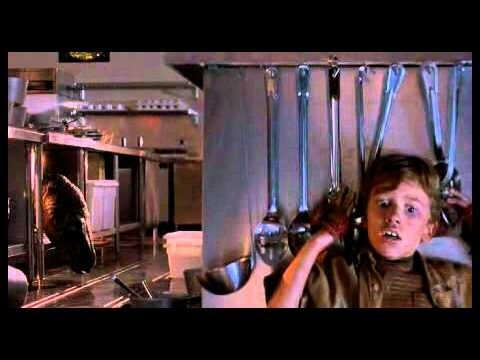25 years later, Jurassic Park still feels like the quintessential special-effects movie

Of all the iconic moments in Jurassic Park, Steven Spielberg’s 1993 science-run-amok blockbuster, there’s one that functions as a perfect microcosm for the film’s legacy and appeal. It’s the early scene in which the characters—and, by extension, the viewers themselves—first catch sight of one of the park’s prehistoric attractions, a towering brachiosaurus. Logistically, it doesn’t make much sense: Dr. Grant (Sam Neill) and the rest of the visitors would surely have seen the mighty beast long before they pulled up right beside it. As movie magic, however, the sequence is beautifully staged, beginning as it does with Grant and Dr. Sattler (Laura Dern) lurching out of their seats, shedding hats and sunglasses along the way, to gawk at the impossible. They can’t believe their eyes—and neither could moviegoers, who had never seen special effects this… special before. “You crazy son of a bitch, you did it,” stammers Dr. Malcolm (Jeff Goldblum), neatly articulating the awe and disbelief of just about everyone in the audience. Spielberg had done it. He had brought back the dinosaurs.
For those of a certain age, seeing Jurassic Park on the big screen was a seminal experience, maybe as momentous as catching Star Wars in its initial run was for an older generation. (I was 9 years old when the film opened, in June of 1993, and will never forget the giddy terror I felt watching the kids evade raptors in the kitchen or stare into the beady eye of the Tyrannosaurus.) Just as he had two decades earlier with Jaws, the grandfather of summer blockbusters, Spielberg ushered Hollywood into a new era. Jurassic Park wasn’t the first CGI spectacle—that honor belongs to Terminator 2: Judgment Day, or maybe to James Cameron’s 1989 film, The Abyss—but it was the point of no return for the industry. The modern age of special effects had begun: Now that audiences had seen what computers could do, there was no going back to stop-motion or other outdated alternatives. CGI had rendered them obsolete.
[In 2013], for its 20th anniversary, Universal brought Jurassic Park back to theaters, this time in three dimensions. The 3-D was superfluous—did the T. rex really need to get closer in the rearview mirror?—but it was still thrilling to see Spielberg’s glorified monster movie in a theater again, to hear John Williams’ rousing theme in Dolby surround and see Nedry get his just desserts on a 30-by-70-foot screen. Today, Jurassic Park still feels like the quintessential special-effects movie. The pacing may feel more sluggish and the continuity errors may be more obvious in hindsight, but time has scarcely eroded the movie’s visual pleasures. It’s not that they haven’t aged; one look at the leathery skin of that first dino reminds you how far CGI has come, at least in terms of texture and detail. It’s that Spielberg, more than just about any of his contemporaries, understands that the key to believable effects is the way they’re integrated into the physical reality of the movie. Part of that is having actors like Neill and Dern, who can express a credible sense of wonder when staring into nothingness (or a green screen). But it’s also about using CGI as a solution, not a crutch.

 Keep scrolling for more great stories from The A.V. Club.
Keep scrolling for more great stories from The A.V. Club.